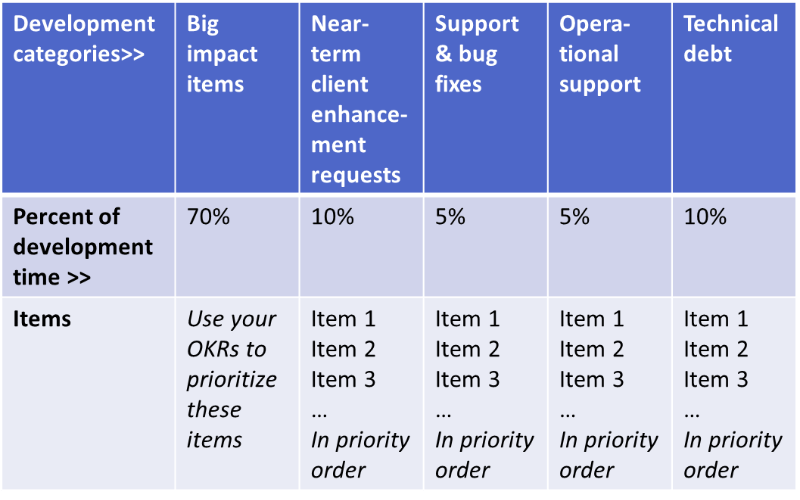Prioritization
Episode #8 of the course Becoming a more strategic product manager by Todd Birzer
Welcome to Lesson 8!
Let’s talk about prioritizing product development efforts. Companies can (and often do) run into trouble with development priorities and consequently struggle to get new and compelling products out the door.
A key danger for any technology company in the business-to-business space is death by a thousand requests. I’ve worked with companies that have neglected major product overhauls as they rush to meet near-term enhancement requests from insistent enterprise clients. If you do this for one or two years, you’ll find yourself in a very weak market position.
Establishing a clear process for prioritizing development efforts can help avert issues like this. Disciplined processes can enable you and your engineering counterparts to:
• prioritize technology investments
• create breakthrough, market-leading products
• establish a sustainable competitive advantage
I’m going to suggest two related processes: a) objectives and key results (OKRs) and b) development buckets.
Objectives and Key Results (OKRs)
In our last lesson, we looked at developing a product vision and strategy—setting the product path for one to five years. OKRs convert the big-picture direction to this quarter’s goals. This process is used by some of the best product development companies, including Google, LinkedIn, and Netflix.
As product managers, we want to focus on the big-impact items—the areas of innovation that will make our customers grin and our competitors sweat. An OKR process, managed jointly with our engineering counterparts, can help us focus on the right projects and sidestep the near-constant distractions.
The “objectives” portion of the OKRs state the business goal, and the “key results” give measurable outcomes that can be used later to grade achievement.
Suppose you are a software-as-a-service (SaaS) platform that helps hospitals manage regulatory compliance. An example OKR is below:
• Objective: Enhance a hospital’s ability to assess its risk of government fines or patient lawsuits.
• Key Results:
• Reduce clicks by 75% to access key data.
• Release to five beta customers by end Q3.
Exactly how you and your development engineers decide to do this (dashboards, risk meters, reports, etc.) will evolve during the “discovery and delivery” process (next lesson) but typically is not detailed in the OKR.
As a suggestion, work with your engineering management to do the following:
• Create two or three OKRs prior to every quarter, including measurable results.
• Share these with your executive teams and ensure consensus.
• Use the OKRs to tightly focus your development team’s efforts.
• Review the OKRs with your team at the end of each quarter, and grade yourself.
Development Buckets
A second approach to ensure your development teams are focused on high-impact items is to use “development buckets.”
Our development teams are rarely free to devote 100% of their time on big-impact items, and often need to do other things as well, e.g. near-term client enhancements, bug fixes, technical debt, operations support, etc. The problem is that we often let the “other” category overwhelm our big-impact items.
To effectively prioritize development, work with your engineering leaders and follow these steps:
1. List your major development categories (see example table below).
2. Decide how much engineering bandwidth you will devote to each area. Note that you want to reserve as much capacity as possible for the big-impact column (i.e. your OKRs).
3. For all columns (except the big-impact column), list items that could be done in stack-ranked priority (most important at the top).
4. Instruct your engineering team to work on these items, starting at the top and working down the list, constrained by the time percentages.
5. Review this quarterly.

As product managers, we want to prioritize scarce development resources on areas that will generate long-term success. OKRs and development buckets can help us do this.
Next up: discovery and delivery.
Todd Birzer
Recommended reading
Recommended book
How Google Works by Eric Schmidt and Jonathan Rosenberg
Share with friends

